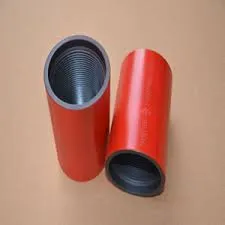- Afrikaans
- Albanian
- Amharic
- Arabic
- Armenian
- Azerbaijani
- Basque
- Belarusian
- Bengali
- Bosnian
- Bulgarian
- Catalan
- Cebuano
- Corsican
- Croatian
- Czech
- Danish
- Dutch
- English
- Esperanto
- Estonian
- Finnish
- French
- Frisian
- Galician
- Georgian
- German
- Greek
- Gujarati
- Haitian Creole
- hausa
- hawaiian
- Hebrew
- Hindi
- Miao
- Hungarian
- Icelandic
- igbo
- Indonesian
- irish
- Italian
- Japanese
- Javanese
- Kannada
- kazakh
- Khmer
- Rwandese
- Korean
- Kurdish
- Kyrgyz
- Lao
- Latin
- Latvian
- Lithuanian
- Luxembourgish
- Macedonian
- Malgashi
- Malay
- Malayalam
- Maltese
- Maori
- Marathi
- Mongolian
- Myanmar
- Nepali
- Norwegian
- Norwegian
- Occitan
- Pashto
- Persian
- Polish
- Portuguese
- Punjabi
- Romanian
- Russian
- Samoan
- Scottish Gaelic
- Serbian
- Sesotho
- Shona
- Sindhi
- Sinhala
- Slovak
- Slovenian
- Somali
- Spanish
- Sundanese
- Swahili
- Swedish
- Tagalog
- Tajik
- Tamil
- Tatar
- Telugu
- Thai
- Turkish
- Turkmen
- Ukrainian
- Urdu
- Uighur
- Uzbek
- Vietnamese
- Welsh
- Bantu
- Yiddish
- Yoruba
- Zulu
Guidelines for Selecting Appropriate Sizes for API Casing in Oil and Gas Operations
Understanding API Casing Sizes A Comprehensive Guide
When it comes to drilling and completing oil and gas wells, understanding the different sizes of casing used is crucial. Casing provides structural integrity to the well, protects the borehole from collapse, and prevents the migration of formation fluids into the wellbore. The American Petroleum Institute (API) has developed standardized sizes and specifications for oil and gas casing, which are essential for ensuring compatibility and safety throughout the drilling process.
What is API Casing?
API casing is tubular steel used in the oil and gas industry to line the borehole of the well. It serves various purposes, including providing support for the well structure, isolating different geological formations, and protecting groundwater aquifers. The API sets forth specific standards for casing sizes, grades, and specifications, all of which are critical for the safe and efficient extraction of hydrocarbons.
API Casing Sizes
The sizes of API casing are defined primarily in nominal diameters, which range from small diameters of 4.5 inches to larger ones like 20 inches or more. The most common sizes include
- 4.5-inch Often used for production casing. - 5.5-inch Commonly used in various well configurations. - 7-inch Frequently used in drilling operations requiring larger diameter casing. - 9.625-inch, 13.375-inch, and 20-inch Typically used for the surface, intermediate, and production casings in deeper wells.
Each casing size corresponds to specific requirements regarding wall thickness, weight, and grade, ensuring they can withstand varying pressures and conditions experienced during drilling and production operations.
api casing sizes

Casing Grades and Types
Casing is categorized into different grades, such as H40, J55, K55, N80, C75, and P110, each representing specific mechanical properties and yield strengths. The choice of casing grade depends on several factors, including the type of formation being drilled, well depth, and the expected pressure.
Moreover, API casing can also be classified into specific types based on its purpose
- Surface Casing The first casing set in a well, used to protect fresh water zones and provide structural support. - Intermediate Casing Installed after surface casing, it isolates high-pressure zones and further stabilizes the wellbore. - Production Casing Set after the well has been drilled to total depth, it enables the safe production of hydrocarbons.
Importance of Correct Sizing
Selecting the appropriate casing size is vital for the success of drilling operations. An incorrectly sized casing could lead to several complications, including well integrity issues, blowouts, or reservoir contamination. Engineers must evaluate the specific conditions of the drilling environment and make informed decisions based on API standards.
Conclusion
Understanding API casing sizes is fundamental for professionals in the oil and gas industry. The API's standardized sizes and grades ensure that casing operates effectively under various conditions, maintaining the well’s structural integrity and safety. As drilling techniques evolve and focus shifts to deeper and more complex reservoirs, the importance of adhering to API specifications and selecting the correct casing size will only continue to grow. For any drilling operation, meticulous planning and compliance with API standards are essential to ensure both efficiency and safety in the extraction of resources from the earth.
-
Well Casing Extension Couplings – Applications and InstallationNewsJun.06,2025
-
Types of Crossover Subs in Drilling & CompletionNewsJun.06,2025
-
Key Features of High-Quality Tubing Pup JointsNewsJun.06,2025
-
Installation and Maintenance Tips for Steel Couplings for PipeNewsJun.06,2025
-
How to Select the Right Pup Joint for Oil & Gas OperationsNewsJun.06,2025
-
Applications of Stainless Steel Pipe CouplingsNewsJun.06,2025







